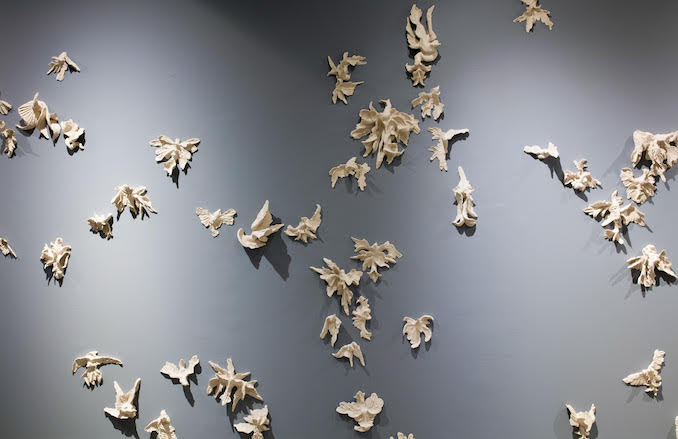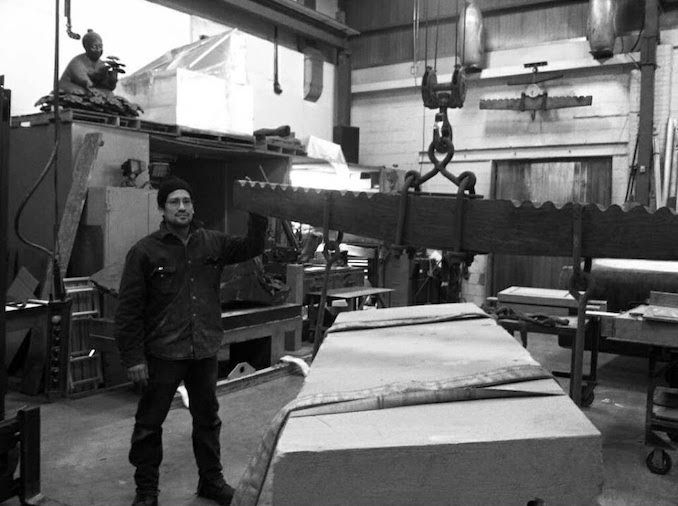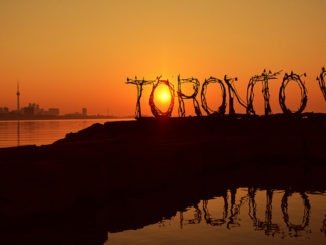I’ve been keeping a bird’s eye view on Toronto-based sculptor David Constantino Salazar‘s latest work over the past year. Fascinated with the installation’s concept and how he has incorporated a sense of community, it’s now available to view as we begin to emerge from the pandemic. FOREVER (BIRD-BOTANICALS) is a breathtaking installation with 500 clay birds at the Gardiner Museum. It’s all about individual and collective trauma many of us have experienced in some shape or from and how it has transformed us.

Inspired by folk tales and allegories passed on from his grandparents in Ecuador, Salazar poignantly asks the viewer to contemplate the cultural symbolism associated with birds such as freedom, love, divinity, and peace, juxtaposed with the bird’s abrupt metaphorical loss of flight and its transformation from bird to plant. He encourages the viewer to ponder the concept of human resilience and what life looks like after trauma, an idea especially pertinent as we begin to recover from the impact of the global pandemic.
The installation transforms the Exhibition Hall inside the Gardiner Museum where visitors will find over 500 individually hand-sculpted pieces produced in clay. They are created during Salazar’s month-long residency at the Museum. In collaboration with Workman Arts, an arts organization that promotes the understanding of mental health and addiction, the installation has a collective feel.
Visitors to the exhibit will enter and find what appears to be a flock of birds on the wall. The new series is a sense of rebirth. “To look deeper, I want to ask the question: What does rebirth look like after death, whether it is literal or metaphorical,” said Salazar.

We had the opportunity to ask Salazar more about this installation…
Why was it important for you to have the community involved?
DCS: Aside from being a proud member of Workman Arts this project spoke to the crux of what this installation speaks to and that is honouring the spaces and organizations that provide support and a place for introspection for self evaluation during the process of continuing one’s self journey.
What does this installation mean for you particularly through the pandemic?
DCS: During the Pandemic I have done extensive work on myself. I have examined the type of human I am and the type of human I want to aspire to be in relationship to myself, my family, my community and to the natural world around me. How does this relate to this installation? The human race has experienced the Pandemic as a collective, will this time and this moment in history inspire us as a collective to re-examine our approach to family, community and the natural world around us? My hope is that the trauma of the Pandemic will force us as a collective to make much needed changes in our daily lives be it with the people around us or the natural world surrounding us.
What will happen to the installation after the exhibition is done?
DCS: Great question. My proposal would be for this installation to become public art. I am officially accepting submissions for potential walls and spaces to hang it on 🙂
Do you have a favourite sculptor or piece that is at the Gardiner that you can share with us?
DCS: Valdivia – these are little figurines that are over 3500 years old, found in Ecuador’s central coast region of the Manabi province.
The reason why these figurines speak to me on a personal level is because this is the birthplace of my family and myself.
These figurines are said to be used for fertility ceremonies, considered as metaphors of the creation of the universe as well as the cycle of the birth and death of the cosmos.
I personally feel that these figurines speak directly to my installation of Forever (Bird : Botanicals) on my invitation to create this exhibition at the Gardiner, it was an honour to be reunited with my ancestors.
What else are you working on?
DCS: I am currently finishing a public art commission titled “Hog Town” to be installed in Toronto’s West End neighbourhood, Parkdale.
What do you miss most over the past 18 months?
DCS: Dinner parties, dancing and being close to people.
Ecuadorian-Canadian artist, Salazar examines the confluence of his symbolic and ancestral roots as a South American and his daily life in Canada. A recipient of multiple residencies internationally and domestically, Salazar has represented Canada at the International Biennial of Asuncion (Paraguay) and completed the Studio Research Residency (Flora & Fauna) in Tiradentes, Brazil. In Canada, he was awarded the AKIN Studio Residence Program at MOCA Toronto and has been invited to the Creative Professionals-in-Residence Mentor Program at OCAD University.
***
David Constantino Salazar’s FOREVER (BIRD-BOTANICALS) will be open for public viewing until August 31, 2021 at the Gardiner Museum.




